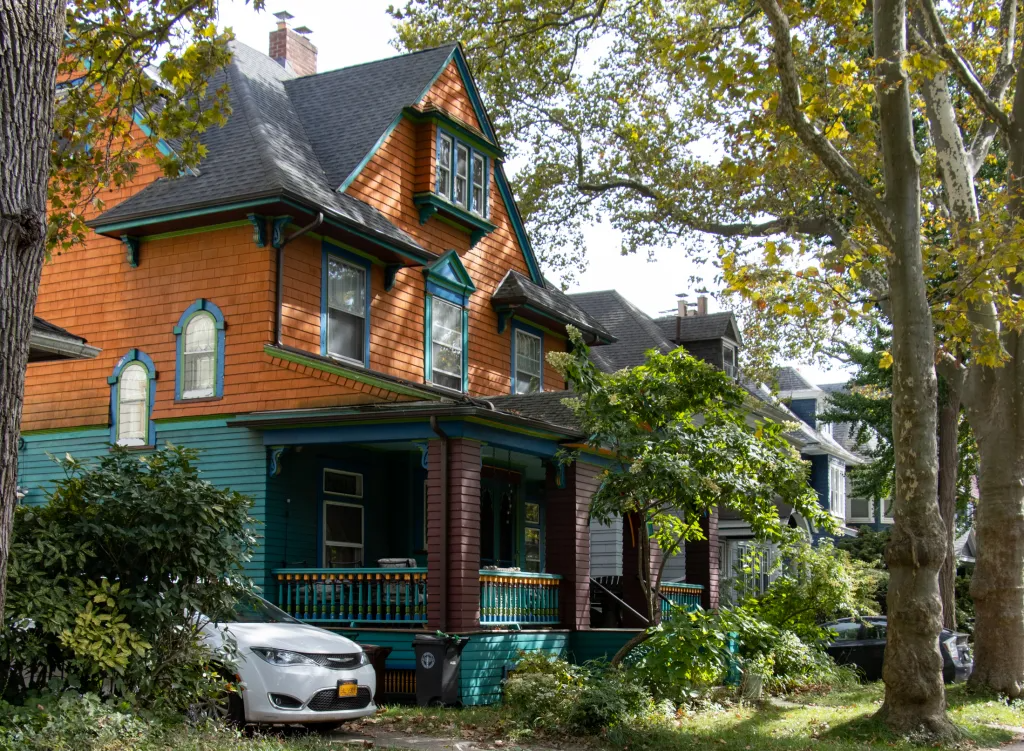421-a Revamp: A Lose-Lose Proposition?
The new regulations for the 421-a tax-abatement program, which long offered developers a tax break in exchange for building affordable housing in certain parts of the city, are set to go into effect at the end of June. The bulk of reporting on the subject has focused on the fact that the program’s new rules…

 The new regulations for the 421-a tax-abatement program, which long offered developers a tax break in exchange for building affordable housing in certain parts of the city, are set to go into effect at the end of June. The bulk of reporting on the subject has focused on the fact that the program’s new rules will mean developers can’t receive abatements in many neighborhoods they used to, including large swaths of Brooklyn. According to a story in today’s Times, however, changes to 421-a will also mark the end of its “negotiable certificate” program, whereby affordable housing builders could transfer or sell off the abatements they received for building affordable units to another developer who was building market-rate housing at a completely different project. The certificate transfers thus generated revenue for affordable builders and gave market-rate developers tax-abatements they could offer to their building’s buyers. A spokesperson for HPD says very few affordable developers used the transfer program, though developer Gary Barnett of Extell Development Corp., for example, says the change will mean there will definitely be a slowdown in affordable development, and development in general, in the city. Carol Lamberg, executive director of the Settlement Housing Fund, a nonprofit group that has built low-income homes in New York since 1969, says that while the certificate transfer program favored affordable developers who were well capitalized, its sunsetting is still a blow for the larger affordable housing development community. It’s one less tool, and we need every tool we can get, she says.
The new regulations for the 421-a tax-abatement program, which long offered developers a tax break in exchange for building affordable housing in certain parts of the city, are set to go into effect at the end of June. The bulk of reporting on the subject has focused on the fact that the program’s new rules will mean developers can’t receive abatements in many neighborhoods they used to, including large swaths of Brooklyn. According to a story in today’s Times, however, changes to 421-a will also mark the end of its “negotiable certificate” program, whereby affordable housing builders could transfer or sell off the abatements they received for building affordable units to another developer who was building market-rate housing at a completely different project. The certificate transfers thus generated revenue for affordable builders and gave market-rate developers tax-abatements they could offer to their building’s buyers. A spokesperson for HPD says very few affordable developers used the transfer program, though developer Gary Barnett of Extell Development Corp., for example, says the change will mean there will definitely be a slowdown in affordable development, and development in general, in the city. Carol Lamberg, executive director of the Settlement Housing Fund, a nonprofit group that has built low-income homes in New York since 1969, says that while the certificate transfer program favored affordable developers who were well capitalized, its sunsetting is still a blow for the larger affordable housing development community. It’s one less tool, and we need every tool we can get, she says.
Developer of Affordable Housing Faces New Challenge [NY Times]
421-a Compromise Reached; AY Carve-Out Reduced [Brownstoner]
Downtown Boosters Wary of Credit Crunch, 421-a Revamp [Brownstoner]





ActionJackson
11:12AM here…
Trolling. Like most internet forum, Curbed and Brownstone are rather useless place to discuss such serious topics (if you don’t know why then god help you). If you take it seriously then there is really nothing we can do.
That being said, about STFU – it still stands. You have no idea how 421-a works, although that did not stop you from putting your .02 in.
I am with the rational people on this. 421-A is many things to many people but it’s primary purpose was to spur development in bad areas. In most cases, where the developer opted to build market rate housing the tax benefit went to the buyers and not the developers. The developers in fact have to pay $26,000 – $36,000 per credit – that cost is then passed on to the buyers who think they are getting a bargain because their taxes are so low. In fact, they are paying those “taxes” up front in the cost of the unit. The money “saved” would serve them better if they bought an older place and kept the mark-up in their pocket.
Affordable housing or not – the cities tax coffers are going to be growing rapidly as the new developments built with 421a begin to have their abatements expire.
I think based on 10:54’s and Action Jackson’s comments, we can infer that “exclusion zones” were very slow to catch up with market values in Brooklyn, which has seen the most rapid gentrification of all the boroughs. Therefore, the part of 421-a that operated on this basis was baloney. Is that what we’re saying? And is this part going to be tossed?
Sounds like the other parts of 421-a were more beneficial and operated as intended. Or have I got this wrong?
Nice. So much for an intelligent debate/discussion, 11:12am.
Keep up that wonderful charm of yours. Any chance of you clarifying your STFU statement or just being trollish today?
10:54am, while 421-a may have sparked AH in Manhattan, SI and the Bronx, it did nothing but spur on luxury condo development in Brooklyn, especially in the past 5 years.
But hey, what do I know, right?
10:21
You actually making a comment about something you have no idea bout.
And 9:14
You are complete tool also. Do you even know the math? If your mortgage is $2000/month, common @ $600 – you are saying a tax that increases your monthly bill 30% is not significant. You must be a renter.
both of you should really STFU.
421-a has always been flawed. But opening both of your mouths will probably lead to a worse idea since you actually have no clue how 421-a works and the actual numbers.
10:21 (Action Jackson) – I don’t think you understand how 421a worked. There were 3 ways to get the benefit: 1) Be located outside of the “exclusion zone”, 2)Include at least 20% affordable units in your projects, or 3) Buy certificates from an affordable housing developer who earned them by actually building affordable housing somewhere else. The first option did not lead to any new affordable housing, nor was it intended to. It was intended to spur new market rate development in what were considered blighted areas. Obviously the definition of what was in and out of the exclusion zone was outdated and included some pretty ritzy neighborhoods, but that’s a different issues. The second option actually resulted in many 80/20 projects getting built in manhattan, which accounts for alot of affordable housing. The third option provided cheap financing for affordable housing developers and was a very important element of the financing stack for projects all over the city – mostly in the Bronx and Staten Island. Developers like Arker used them all the time. It’s just factually incorrect to say that 421a didn’t result in the development of affordable housing in the city.
Yes but 10:03 – since the developers can then sell the units at higher price (b/c of the low taxes), the developers reap alot of the benefit….
Horse-puckey!
421-a has been abused for years, period, end of story. The majority (and I’d bet it’s 95% or higher) of the recent developments that took advantage of 421-a’s current incentives NEVER build any affordable housing, or rather, only built houses for those making well into the 6 figure range.
I was a proponent of killing off this “tax leech” completely, but definitely tying the affordable housing to the actual building and not some certificate transfer program will stop some of the rampant abuse.
Now, let’s see who rushes to beat the clock as the current version sunsets.